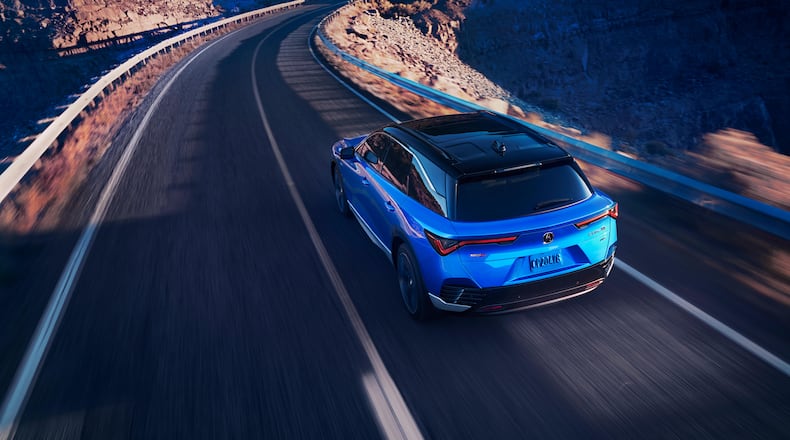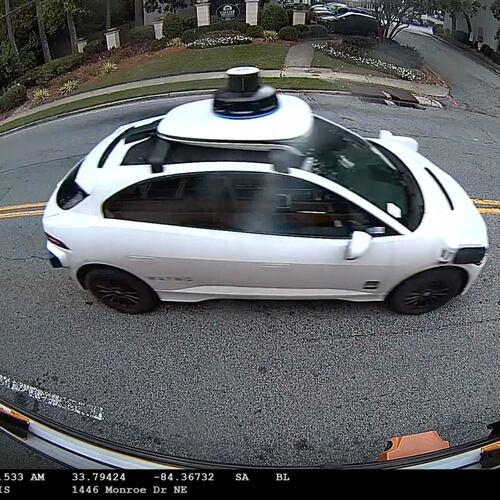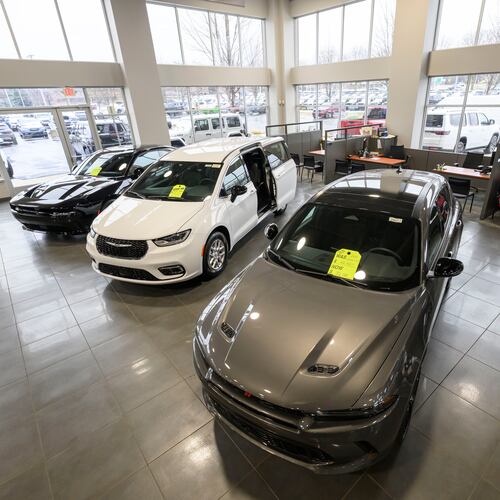The 2024 Acura ZDX that took me to the airport last month was a little aggressive. The car changed lanes more often than I would have, looking for an opening in traffic, but who was I to complain? I wasn’t the one making decisions.
I was alone in the car, sitting in the driver’s seat. I wasn’t touching the steering wheel or the pedals, though my hands and feet hovered nervously over them as I watched the road.
Self-driving cars are the stuff of the future, and the future is closer than you might think.
If you haven’t been car shopping in a while, the car Acura lent me to test might sound like some prototype in testing on a closed course — but it wasn’t. The ZDX is a new electric vehicle you can buy today, and one of dozens for sale with Advanced Driver Assistance Systems so capable you might mistake them for self-driving vehicles.
To be clear: There are no self-driving cars for sale in the United States today
Again, to be precise, you cannot buy a self-driving car in the U.S. in 2025.
Credit: SPECIAL
Credit: SPECIAL
Cars that can legally drive themselves on every type of roadway while their owners sit back and watch movies or send emails are fictional.
Several companies now operate driverless taxi services in a handful of cities. You might have even seen driverless Waymo cars testing in Atlanta. However, those are controlled experiments, with the vehicles limited to specific geographic areas and a live person monitoring them remotely.
Credit: Special
Credit: Special
However, many cars you and I can buy have early versions of the technology automakers hope will one day lead to self-driving cars.
These systems can accelerate, brake and steer a car to keep it in its place in traffic without input from the driver. They often work only on highways or within specific speed ranges.
A five-rung ladder
The automotive industry uses a five-level system created by SAE (formerly the Society of Automotive Engineers) to map its progress toward self-driving cars. State laws regulate vehicle safety, so what is legal in Georgia might differ from what is allowed in California.
Level 1
At Level 1, your car can intervene slightly in your driving to keep you safe. A lane-keeping system that helps steer to center you in a lane is a Level 1 technology.
Level 2
At Level 2, features like active cruise control and lane centering work together. Some Level 2 systems let the driver take their hands off the wheel and their feet off the pedals but not look away from the road.
Credit: TNS
Credit: TNS
Level 2 systems have grown relatively common. GM’s Super Cruise, Ford’s BlueCruise and Tesla’s Full Self-Driving (Supervised) system all sit at Level 2. They are no longer limited to luxury cars — Chevrolet will sell you a Silverado pickup with Super Cruise. The most advanced version of that technology can even tow a trailer.
Level 3
At Level 3, the car drives itself under limited conditions, and the driver can safely look away from the road. The drivers must remain aware and prepared to take over when prompted.
Only one manufacturer offers a Level 3 system for sale in the U.S., specifically in Nevada and California. Mercedes-Benz installs its Drive Pilot technology in its high-end S-Class and EQS Sedan models. The system allows drivers to take their eyes off the road but will only engage under 45 mph.
Level 4
At Level 4, the car can drive itself in a fixed loop on known roads. The rider is not required to take over driving at any time. These vehicles may or may not have a steering wheel or pedals. In some places, Level 4 driverless rideshare vehicles (like Waymo’s) are in limited testing but not approved for general use in any state.
Level 5
At Level 5, the car can drive itself under any conditions on any road. These vehicles do not have steering wheels or pedals. At this point, Level 5 systems are theoretical.
Names can be misleading
Safety advocates worry that automakers overstate what these systems can do. In 2022, prominent car safety groups asked the auto industry to be more careful with marketing. Names like “Autopilot,” which Tesla uses for its least capable ADAS system, could imply that self-driving cars are already here.
Some safety groups have begun formally evaluating the systems. The federal government hasn’t yet tested them but has proposed a test for automatic emergency braking systems, which might be the first step toward someday regulating what automakers can claim.
Many questions remain
The technology is new enough to raise novel questions for regulators and police. For instance, who is responsible for an accident involving an ADAS system? How will police know when to pull over a distracted driver if they might be using a Level 3 ADAS system that makes some distractions safe?
One of the reasons Mercedes-Benz was able to get Nevada and California to sign off on Drive Pilot, for instance, is that the company agreed to be liable for accidents caused while the system is engaged.
The company has proposed that automakers install teal-colored exterior lights illuminating when an ADAS system is engaged so police and other drivers know it’s working.
Trust will come slowly
Even once the parties settle those questions, Americans must trust ADAS systems before true self-driving is possible. One AAA study this year found that just 13% of Americans said they would get into a self-driving car.
I test a few dozen cars a year as part of my work for Kelley Blue Book, and frankly, they make me nervous. However, I have gradually changed my attitude toward self-driving cars. Looking at the traffic around me, I see enough drivers tapping on phones or looking at screens that I wonder if I might be a little more comfortable knowing they weren’t the ones driving.
The ZDX got me to the airport a little faster than I likely would have on my own.
Sean Tucker reports for Kelley Blue Book from Washington, D.C., where he has covered the auto and energy industries for a quarter-century.
The Steering Column is a weekly consumer auto column from Cox Automotive. Cox Automotive and The Atlanta Journal-Constitution are owned by parent company, Atlanta-based Cox Enterprises.
About the Author
Keep Reading
The Latest
Featured






